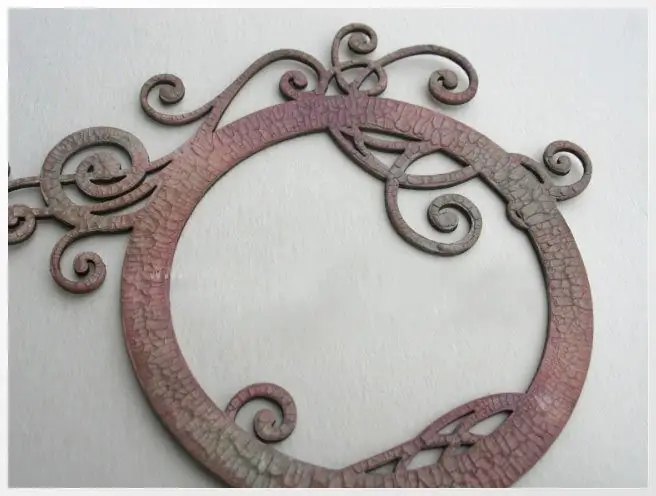Your favorite photo, adorable embroidery or the first drawing of your baby can be decorated in an original round frame made by hand. Such an unusual in form and spectacular "exhibit" will find its rightful place in the interior of your home. You can make the base of a round frame from various materials: cut out of cardboard, weave from straw or twigs, mold from salt dough. A good blank for it can serve as finished products of a round shape: a disposable plate, an embroidery hoop or a vinyl disc.

It is necessary
- - thick cardboard;
- - decorative paper or a piece of fabric;
- - PVA glue / paste / BF-6 / rubber;
- - stationery knife and scissors;
- - ruler;
- - compasses;
- - a loop for hanging pictures or a string;
- - hole puncher;
- - decorative elements or natural materials.
Instructions
Step 1
Select an image (photo, drawing, embroidery, etc.) suitable for the round frame and take measurements from it. Determine the size of the inner and outer diameters of the frame. A narrower bezel is suitable for images with many small details, and a bezel with wide borders is suitable for large objects.
Step 2
Draw and cut out three blanks according to the received dimensions. The first is a cardboard ring - the base of a round frame. The base must be pasted over with beautiful decorative paper or fabric. To do this, from the selected finishing material, cut out, using the cardboard base of the frame, the second blank - a ring with hem allowances along the outer and inner edges. A frame pasted over with a snow-white Whatman paper or plain chintz fabric will look good. Choose a finish that matches the style and emphasizes the picture in the frame.
Step 3
To glue the cardboard base, first make notches on a blank made of decorative paper or fabric - cut the allowances around the entire circumference with small teeth. This will allow the paper or fabric to fold evenly around the rounded edge of the frame. If the fabric is elastic, then you can do without notches - it will fit the shape of the frame anyway.
Step 4
Cut out the third blank from the cardboard - the background for the image - a circle with a slightly smaller (a couple of millimeters) diameter than the outer diameter of the frame. On top of the backing parts, make a semicircular notch to fit your thumb for easy extraction of the frame contents. Just below with a hole punch, punch four holes through which to pass a string or string to hang the frame on the wall. You can glue a special ready-made metal loop with a glue gun.
Step 5
Now you can start assembling the finished product. Put the decorative frame wrapper face down, place the cardboard base on it, aligning the parts (the allowances for the hem of the decorative part evenly protrude beyond the edges of the cardboard frame). Wrap the top half of the cardboard base with paper or cloth, sequentially gluing the teeth of the allowance to the outer diameter of the main frame part. Glue the allowance along the inner diameter completely. For paper, it is better to use PVA or rubber glue, and for fabric - starch paste or BF-6 glue.
Step 6
On top of the backing part, place the backing with the inner side down. Glue the remaining unbent teeth of the allowance of the decorative part, grabbing two parts already - the base and the substrate. Thus, between these details of the frame, a "pocket" is formed in which you can place your image.
Step 7
Your imagination can tell you other options for designing images with a rounded shape. For example, an old alarm clock or a room barometer will turn your photo into a unique mini-installation. Vinyl and CDs as photo frames with round photos of mega-stars pasted on them will decorate the interior of an avid music lover. A wreath-shaped braid woven from straw will serve as an excellent addition to the embroidered round composition.






